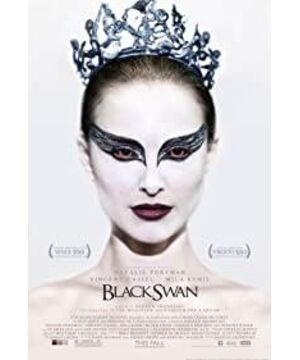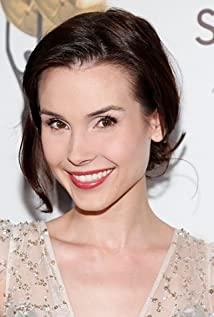Set up a dark opposite for the pure and flawless Nina, and let Nina discover the dark side of her heart while constantly resisting each other - such a plot setting is too easy. The dramatic tension of "Black Swan" lies in the transformation of this self-character. It is mixed with the sensitive and entangled scenes of "Swan Lake", and Nina is always placed in the audience's gaze-before we feel the so-called artistic infection and sublime, a question that must be answered is: "Find a pure and innocent Isn't that the fantasy of all male chauvinists that the teenage girl is fully sexual?"
Nina's character is rooted in a complex desire structure - her mother, a once-failed dancer, always exerts patriarchal authority; Beth, the predecessor of Swan Lake, is a shadow that Nina cannot cross; Lily, the black swan who symbolizes the opposite, constantly invades Nina's ethical bottom line; Thomas, a thoroughly male character, forces Nina to constantly break through and distort herself. Looking closely at these four characters, we will find that they have formed all the narrative elements and closed spaces. Among them, the mother is a purely female character who has failed in the patriarchal society and is free from the shackles of men; while Thomas is a purely male character who plays the role of "primitive father" and determines the status of all women; Beth is Nina's mother The fantasy and opposition of Thomas is a role recognized in the patriarchal society; while Lily is Thomas' fantasy and opposition, the sexual temptation that men desire. In Greymas' symbolic matrix:
X inverse x
non-x non-inverse x
We can easily find the positions of these four:
Mother
Thomas Beth Lilly
Mother and Thomas are completely gender-opposed and unfold through fantasies of both (Beth, Lily). There is no place for nina in this closed desire matrix. A standardized interpretation of the film is that these opposing characters reveal the inner dark side of the pure nature of Nina, allowing her to achieve artistic sublime in the presentation of the two characters. Yet this interpretation misses precisely the dimension of the gaze, what presupposes the act of the scene. Nina does not exist in the narrative, she exists entirely for the audience's gaze, she introduces a crack in the closed structure - as the audience's fantasy of how a pure girl can be transformed into a woman can only escape us by thus constructing Unconscious desire. The fact is not the cliché that "the highest pleasure of art is sexual pleasure, and Nina finally exudes sexual charm to make the audience like her", but through the process of making her full of sexual temptation, the original innocence is reversibly revealed. Flawless is a male fantasy - not that the black swan has entered the essence of nina's white swan, transforming her from an ascetic image to a sexual image, but that she is always already sexual. The white swan itself is a fantasy constructed for the gaze, and through this independent image of transcendence freed from male desire, it conceals the complete masculinity of our reality. Only by envisioning this transformation can we escape the stalemate of encounters with real trauma, maximally delaying our approach to the sublime.
Do we need to go back to Otto Weininger's infamous quote: "Women are only and totally sexual." We have to cut this line cleanly from male chauvinism. Far from being the most receptive theory of machismo to justify the so-called "rape of being raped," it is, on the contrary, an unacceptable and unbearable reality to them. What the male chauvinists seek is to expose the raw desires beneath the social exterior of all women, a woman who actively participates in social work, wears a socialized uniform, and adheres to the ethics of society—but they must be lustful inside. What they are passionate about is not just what lies behind the female disguise, but the disguise that it must be in its very nature—without the impediment of this desire, there is no desire at all. Therefore, when the essence of women is exposed nakedly, what they feel is precisely the incompetence of men. The split between male pleasure and the public sphere makes maleness a self-limitation of maleness. If we want to get satisfaction from male pleasure, then we must cut it off from the definite goal (women herself).
So Arendalonowski has to do this: present Nina as a pure teenage girl who has fallen and awakened in the pressure of her mother, the shadow of Beth, the seduction of Lily, the seduction of Thomas. Only in this way can this process be completely placed under the gaze of our patriarchal society and become an "acceptable" transformation process, so as to keep the film above the audience's emotional bottom line, as the American media said: "Let the male audience watch From thrillers to let female audiences see love." This horror and love is an emotional infusion sustained by the fantasy of Nina's raw, pink, pure image. As at the end of the movie, Nina's perfect performance of sexual attraction makes the audience go mad, but the audience's madness is built on the minimum distance between the stage and the seat. It is this dark space that ensures the stare of the Big Other. Safe position, keeping sexual fantasies above the spectator's ideal object rather than a living person.
May wish to recall, what is the driving force of the tension and horror of the film "Black Swan"? It's not the external evil and supernatural power, but the self-mutilation of Nina to herself. The most unbearable horror of the film, as many people say, is not the scene where Nina's mother trims her nails in the bathroom? The audience is afraid of the contact between the scissors and the body, and the crisp sound of the mother pressing the scissors hard. This unbearableness is precisely because here we encounter the real world - the body suggests suspending what is going on under our skin, this suspending is an effect of symbolic order, and when nina's back is constantly When scratched to show blood, torn nails with hands but peeled off a layer of skin, we have to face the bright red flesh covered by the skin of the body - as a cruel, superego trauma dimension.
Nina's transformation was accompanied by her constant self-destruction and depression, and the tension between the two finally reached its peak when Nina stabbed herself. Nina finally achieved her artistic sublime on a stage completely open to the other, and the price she paid was that she had to kill herself. Back to the question at the beginning: how can a woman be sublime in the male gaze? The answer is that she must become something "in her but more than herself", the remainder of her own body - an object a in the Lacanian sense. become an inscription of pure difference, which names their own difference from themselves. On the one hand, it fills the gap in reality, bridging the entire symbolic chain—nina, like all her predecessors, perfectly completes the performance and continues to satisfy all gazes; on the other hand, it reinforces the original system A position of interpretation that has always been rejected, in the sense that Nina's performance breaks the chain and becomes the real act - when the show ends and Thomas and the rest of the cast come in, they are horrified to find Nina's wounds and wounds. Blood, this was completely beyond their expectations. From the beginning of the film to this point, others in the film and the audience outside the film have always ignored Nina's trauma. They always appear and disappear. The film must use it as a fantasy to fill the cracks caused by Nina. But at the end, death becomes a living reality - the fantasy of desire is by no means ideal, it also includes the loss of fantasy. Nina's death is a response to the desire structure dominated by the male root (Thomas), an identification with the void within the entire symbolic realm. Object a as the void is ultimately about the male root, and it has always been both the signifier of pleasure and the signifier of castration.
View more about Black Swan reviews











